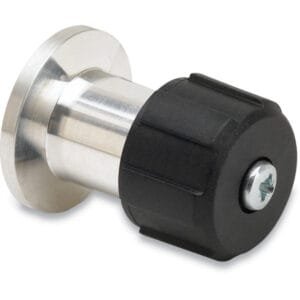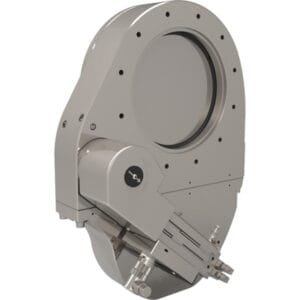ConFlat® (CF) UHV Conical Reducer Nipples: Tapered Stainless Steel Adapters for Reliable CF Flange Transitions
ConFlat® (CF) UHV Conical Reducer Nipples by TFM are engineered to provide precise, leak-tight transitions between different CF flange sizes in ultra-high vacuum (UHV) systems. Constructed from 304L stainless steel tubing and terminated with standard knife-edge CF flanges, these conical reducer nipples are ideal for applications where vacuum integrity and clean flow dynamics are critical.
The conical geometry ensures a gradual internal transition between flange sizes, reducing gas turbulence and conductance loss across connections. These components are widely used in UHV-compatible instrumentation, vacuum chambers, beamlines, and research equipment where mixed flange sizes must be integrated seamlessly.
Key Features of ConFlat® (CF) UHV Conical Reducer Nipples:
Tapered Conical Design
The reducer shape enables a smooth, controlled flow path between two flange sizes, helping maintain vacuum performance and minimizing system impedance.CF Knife-Edge Flanges
Each ConFlat® (CF) UHV Conical Reducer Nipple includes one larger and one smaller CF flange—commonly CF63 to CF40 or CF40 to CF16—compatible with copper gasket sealing in UHV environments.304L Stainless Steel Construction
These ConFlat® (CF) UHV Conical Reducer Nipples are fabricated from vacuum-grade stainless steel, chosen for its corrosion resistance, low outgassing properties, and weldability.Ultra-High Vacuum Compatibility
Designed for use in systems operating down to 10⁻¹⁰ torr or lower, these nipples ensure long-term leak-tightness when properly sealed with bolts and copper gaskets.Customizable Dimensions
TFM offers standard configurations of ConFlat® (CF) UHV Conical Reducer Nipples and can also produce custom flange combinations and tube lengths upon request.
Applications:
Connecting CF flanges of different sizes in UHV chamber ports
Adapting instrumentation or diagnostic tools with smaller CF connectors
Reducing pipeline dimensions in beamline setups or spectroscopy systems
Transitioning between legacy and modern CF sizes in retrofitted equipment
Supporting gas, ion, or electron transport paths with minimal conductance drop
TFM also supplies related components such as straight CF reducer nipples, half and full CF nipples, copper gaskets, bolt sets, and rotatable flange assemblies, making it easy to build or modify complete UHV flange systems.
Ordering Table
| Flange Size/OD (Large) | Flange Size/OD (Small) | Part Number |
| DN16CF (1.33" OD) | DN16CF (1.33" OD) | CRN212X133 |
| DN16CF (1.33" OD) | DN16CF (1.33" OD) | CRN275X133 |
| DN25CF (2.13" OD) | DN25CF (2.13" OD) | CRN275X212 |
| DN25CF (2.13" OD) | DN25CF (2.13" OD) | CRN337X212 |
| DN35CF-DN40CF (2.75" OD) | DN35CF-DN40CF (2.75" OD) | CRN337X275 |
| DN35CF-DN40CF (2.75" OD) | DN35CF-DN40CF (2.75" OD) | CRN450X275 |
| DN50CF (3.38" OD) | DN50CF (3.38" OD) | CRN450X337 |
| DN35CF-DN40CF (2.75" OD) | DN35CF-DN40CF (2.75" OD) | CRN462X275 |
| DN50CF (3.38" OD) | DN50CF (3.38" OD) | CRN462X337 |
| DN63CF (4.50" OD) | DN63CF (4.50" OD) | CRN462X450 |
| DN50CF (3.38" OD) | DN50CF (3.38" OD) | CRN600X337 |
| DN63CF (4.50" OD) | DN63CF (4.50" OD) | CRN600X450 |





Reviews
There are no reviews yet.